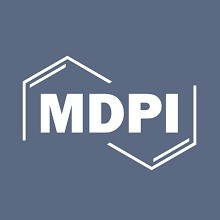
دانلود مقاله به باد رفتن سر انسان با کنجکاوی زیاد
خلاصه
1. مقدمه
2. مواد و روشها
3. نتایج
4. بحث
منابع
Abstract
1. Introduction
2. Materials and Methods
3. Results
4. Discussion
References
چکیده
کنجکاوی حافظه را برای اطلاعات هدف مفید میداند و همچنین ممکن است برای اطلاعات اتفاقی ارائه شده در حالتهای کنجکاوی از حافظه استفاده کند. با این حال، مشخص نیست که آیا حافظه تقویتشده با کنجکاوی اتفاقی به ظرفیت اطلاعات اتفاقی در طول حالتهای کنجکاوی بستگی دارد یا تحت تأثیر آن قرار میگیرد. در اینجا، شرکتکنندگان مسنتر و جوانتر تصادفاً تصاویر چهره نامرتبط (مثبت، منفی و خنثی) را رمزگذاری کردند، در حالی که پاسخهایی را برای سؤالات بیاهمیت پیشبینی میکردند. ما برای پاسخ به سوالات بی اهمیت و چهره های نامرتبط که در هنگام کنجکاوی بالا در مقایسه با حالت های کم کنجکاوی در افراد جوان تر و مسن تر ارائه می شود، تقویت حافظه پیدا کردیم. جالب توجه است که ظرفیت چهره، حافظه چهره های غیرمرتبط را تغییر نداد. این نشان می دهد که فرآیندهای مرتبط با برانگیختن کنجکاوی حافظه را برای اطلاعات اتفاقی به جای ظرفیت افزایش می دهد.
توجه! این متن ترجمه ماشینی بوده و توسط مترجمین ای ترجمه، ترجمه نشده است.
Abstract
Curiosity benefits memory for target information and may also benefit memory for incidental information presented during curiosity states. However, it is not known whether incidental curiosity-enhanced memory depends on or is affected by the valence of the incidental information during curiosity states. Here, older and younger participants incidentally encoded unrelated face images (positive, negative, and neutral) while they anticipated answers to trivia questions. We found memory enhancements for answers to trivia questions and unrelated faces presented during high-curiosity compared with low-curiosity states in both younger and older adults. Interestingly, face valence did not modify memory for unrelated faces. This suggests processes associated with the elicitation of curiosity enhance memory for incidental information instead of valence.
Introduction
Some information is easier to remember than other information and one of the reasons may be linked to curiosity. Curiosity is an intrinsic motivation to gain knowledge for its own sake rather than its instrumental utility [1–3] and is an essential component of human activity and information processing. In fact, individuals generally spend much time each day searching for information that interests them through the internet, books, asking questions, etc. According to Kashdan et al. [4], curiosity is defined as “the recognition, pursuit and desire to explore novel, uncertain, complex, and ambiguous events,” which initiates and facilitates learning. In addition, being curious and knowledge seeking has been associated with a number of positive outcomes, including better physical, psychological, cognitive, and social well-being. For example, studies show that curiosity can influence encoding and retrieval of information [5] and may also have broader effects that extend to memory for implicitly encoded unrelated information encountered in close temporal proximity to interesting information through activity in the midbrain and hippocampus and by functional connectivity between these regions [6]. These findings suggest that there may be a link between the mechanisms supporting extrinsic reward motivation and intrinsic curiosity and highlight the importance of stimulating curiosity to create more effective learning experiences. According to the PACE framework of how curiosity shapes learning and memory, dopaminergic functions improve hippocampus-dependent coding and memory consolidation [7].
Results
Data analyses were carried out using Statistica 8.0 [31]. As conducted in previous studies [14], we considered ratings of 1, 2, and 3 as low curiosity and ratings of 4, 5, and 6 as high curiosity, and included in the analyses only trials for which participants indicated that they did not know the answer. For each subject, we calculated the percentage of correctly recalled answers and mean accuracy scores on face recognition, calculated as hits minus false alarm (FA), for all conditions. Thus, we ran two separate General Linear Models (GLMs), one for trivia recall and one for face recognition, with Curiosity (two levels: high and low) and Valence (three levels: negative, neutral, and positive) as within-subject factors and Group (two levels: younger and older) as a between-subjects factor.
